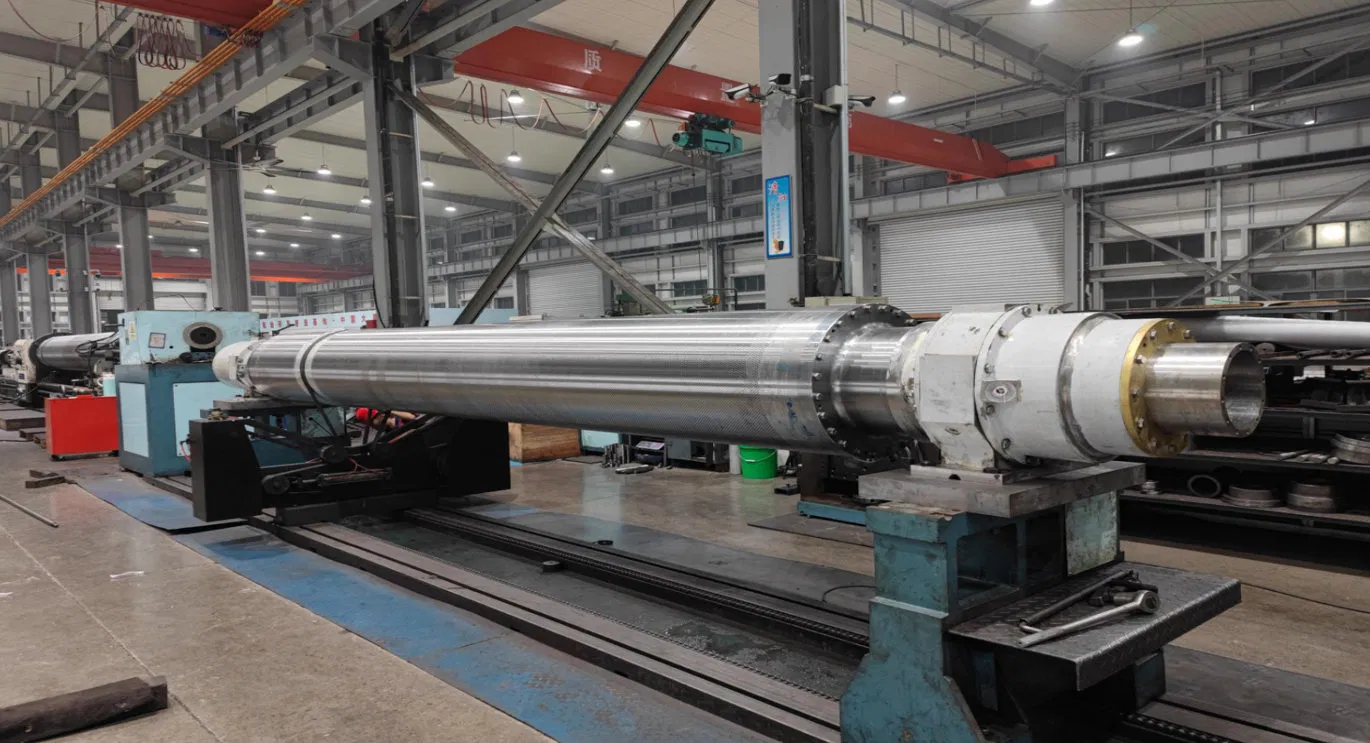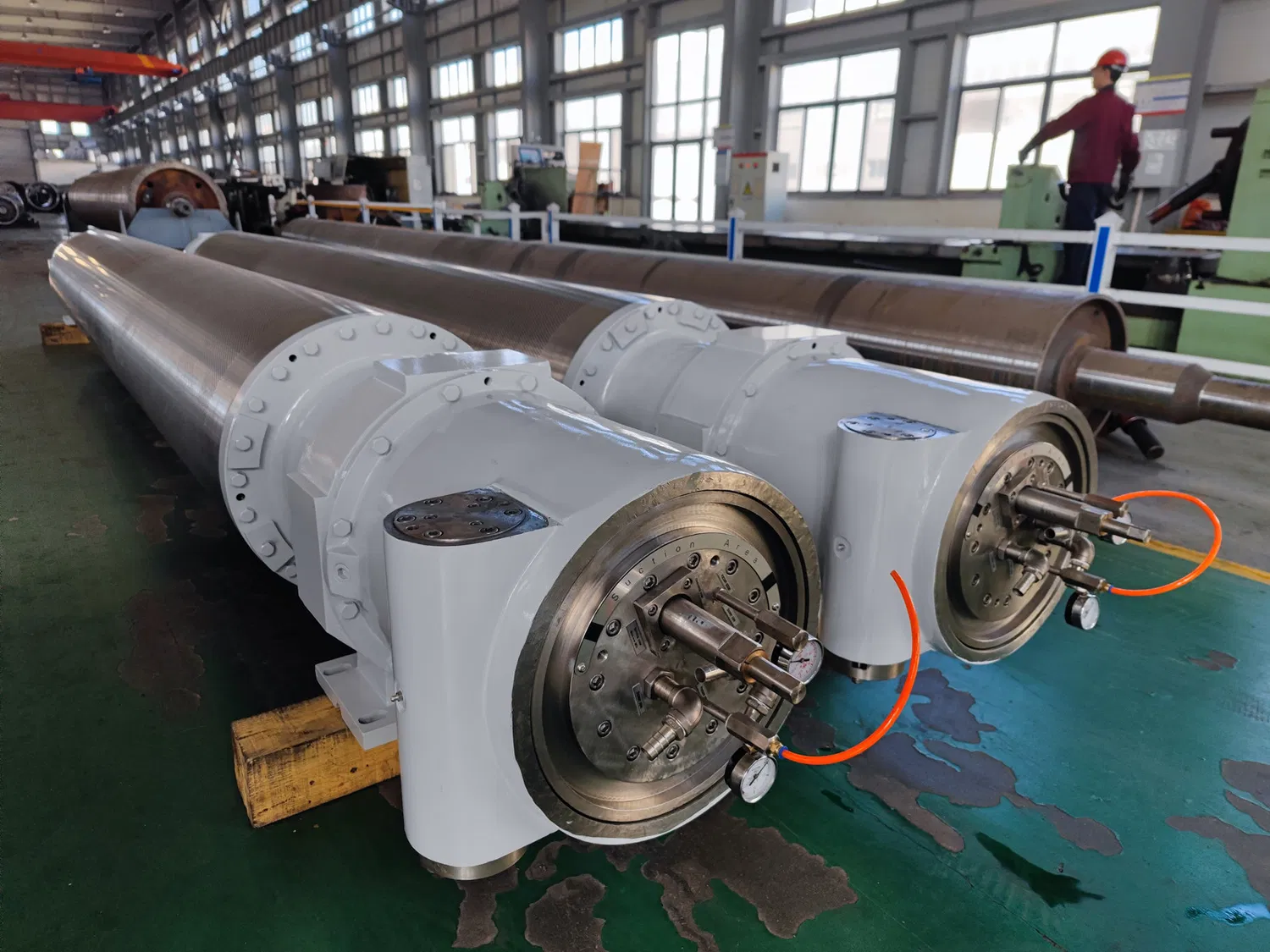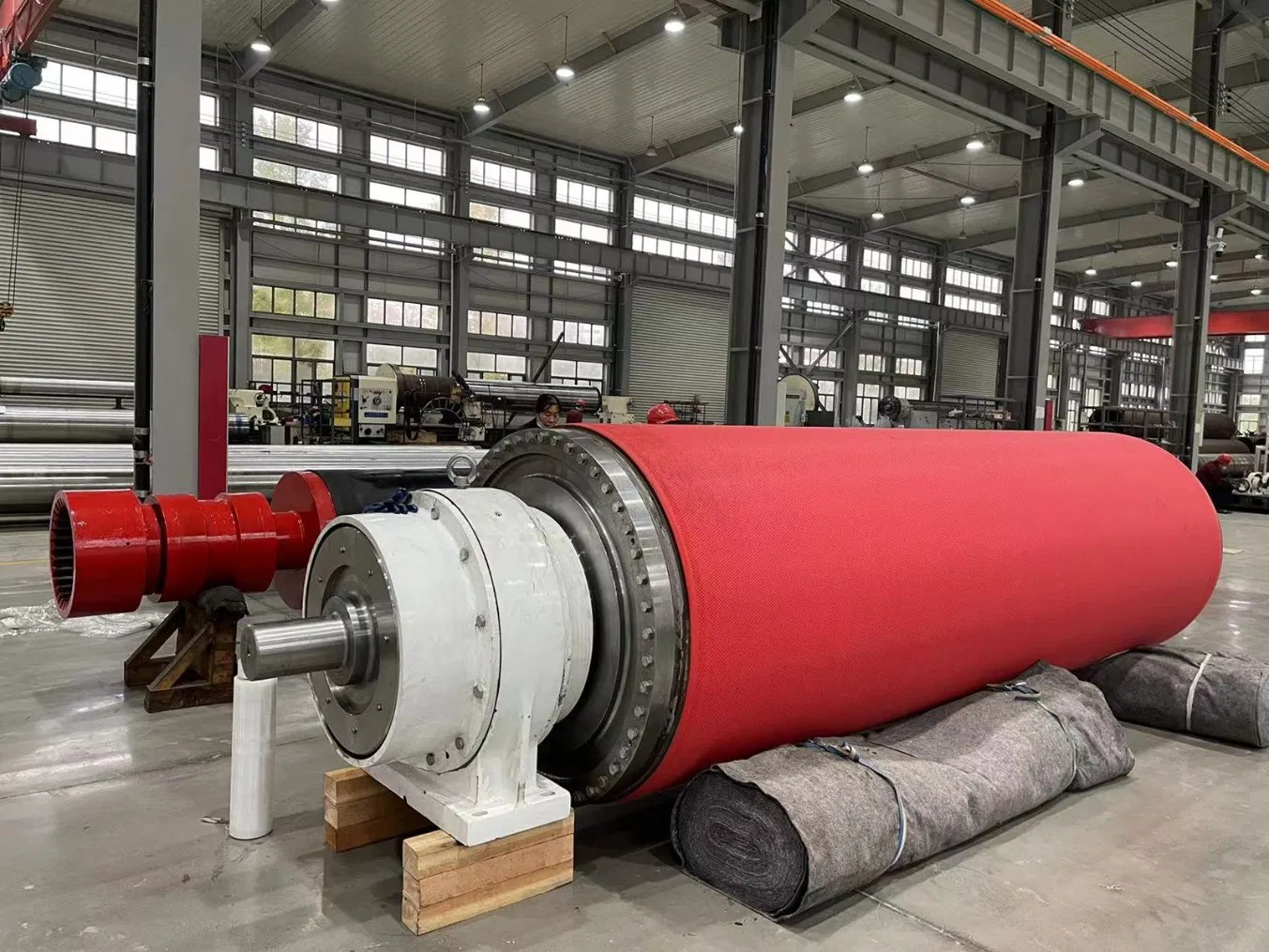To be honest, when most people think about paper, they probably picture trees, perhaps a stack of documents, or maybe even a newspaper. Few, if any, envision the colossal, intricate machinery that transforms wood pulp into the ubiquitous sheets we use daily. Yet, at the heart of every successful paper mill lies a complex ecosystem of interconnected parts, each performing a vital function. And underpinning the continuous operation of this marvel of engineering is a crucial, often overlooked, partner: the Paper machine components supplier.
Frankly speaking, without a reliable source for high-quality components, even the most advanced paper machine would grind to a halt. The sheer scale, speed, and continuous nature of paper production place immense stress on every single part, from the smallest bearing to the largest drying cylinder. This isn't just about replacing a worn-out piece; it's about optimizing performance, ensuring safety, and extending the lifespan of multi-million dollar investments. In my experience, the difference between a thriving mill and one plagued by downtime often boils down to the strength of its supply chain for these critical parts.
The Heart of Production: Key Paper Machine Components
Let's delve a bit deeper into what makes a paper machine tick. It's a fascinating journey, starting from a watery pulp slurry and ending with a finished paper roll. Each stage is dependent on specialized components, and understanding them helps underscore the importance of a dedicated Paper machine components supplier.
The Wet End: Forming and Pressing
The journey begins at the wet end. Here, the headbox evenly distributes the pulp slurry onto a moving wire mesh, often referred to as the forming fabric. This fabric, a highly engineered textile, allows water to drain away, forming a nascent paper web. Suction boxes, foils, and various rolls assist in this dewatering process. Further along, the press section employs massive rolls, often covered with specialized felts, to squeeze out more water mechanically. These components operate under immense pressure and constant moisture, demanding materials that can withstand corrosive environments and heavy loads. Interestingly enough, the precision of these initial stages dictates much of the final paper's quality and consistency.
The Dry End: Drying, Finishing, and Reeling
Once the paper web leaves the press section, it's still quite wet. It then enters the dryer section, a sprawling array of steam-heated cylinders that evaporate the remaining moisture. These cylinders, along with their associated steam and condensate systems, hoods, and air handling units, are subject to extreme temperatures and pressures. Following drying, the paper might pass through a size press for surface treatment, then through calender stacks for smoothness and thickness control, and finally, it's wound onto large reels. Each of these stages requires robust, precisely manufactured industrial paper machine parts, from bearings and gears to specialized rolls and doctor blades.
Auxiliary Systems: The Unseen Workhorses
Beyond the main paper-making line, countless auxiliary systems keep the operation running. This includes sophisticated hydraulic and pneumatic systems, lubrication systems, pumps, valves, piping, electrical controls, and automation systems. These components, while not directly touching the paper, are absolutely vital for the machine's overall functionality and safety. A comprehensive Paper machine components supplier will offer solutions for these critical support systems as well, ensuring a holistic approach to mill maintenance and upgrades.

The Indispensable Role of a Specialized Paper Machine Components Supplier
Why can't paper mills simply source these parts from general industrial suppliers? The answer lies in the unique demands of the pulp and paper industry. Paper machine components are not off-the-shelf items; they are often custom-engineered, require specific material properties, and must meet stringent performance standards. This is precisely where a specialized Paper machine components supplier becomes indispensable.
Expertise and Engineering Prowess
A leading supplier possesses deep industry knowledge. They understand the nuances of different paper grades, machine speeds, and operational challenges. This expertise translates into the ability to recommend the right materials, designs, and specifications for each component, ensuring optimal performance and longevity. Many experts agree that this specialized engineering capability is a primary differentiator.
Quality Assurance and Reliability
Downtime in a paper mill can cost hundreds of thousands of dollars per hour. Therefore, the quality and reliability of every component are paramount. A reputable Paper machine components supplier adheres to rigorous quality control standards, often holding certifications like ISO. They source high-grade raw materials and employ advanced manufacturing processes to produce durable, precision-engineered parts. This commitment to quality ensures that the reliable paper machine spare parts they provide will perform as expected, minimizing unexpected failures.
Inventory Management and Rapid Response
Mills cannot afford to wait weeks for a critical part. A strong supplier maintains a comprehensive inventory of frequently needed components and has efficient logistics networks to ensure rapid delivery, even to remote locations. In my experience, a supplier's ability to respond quickly to emergency breakdowns is a true test of their commitment and capability.
Customization and Innovation
Paper machines are often unique, with modifications and upgrades over their long operational lives. A top-tier supplier isn't just about standard parts; they can often reverse-engineer existing components or design custom solutions to improve machine performance, adapt to new production requirements, or address specific operational bottlenecks. This innovation capability is vital for mills looking to stay competitive.

Navigating the Selection: Choosing the Right Supplier
With so much riding on the quality and availability of components, selecting the right Paper machine components supplier is a strategic decision. It's not just about price; it's about partnership and long-term value. Have you ever wondered what truly separates the best from the rest?
Experience and Reputation
Look for suppliers with a proven track record in the pulp and paper industry. How long have they been in business? What do their existing clients say about their service and product quality? A strong reputation is built on consistent performance and customer satisfaction.
Product Range and Specialization
Does the supplier offer a comprehensive range of components that meet your specific machine's needs? Do they specialize in certain areas, like wet-end components or dryer section parts, where their expertise might be particularly beneficial? A broad yet specialized offering can simplify your procurement process.
Technical Support and After-Sales Service
The relationship with a supplier shouldn't end at the point of sale. Do they offer technical assistance for installation, troubleshooting, or optimization? Are their engineers available for consultation? Excellent after-sales support is a hallmark of a truly valuable partner.
Logistics and Global Reach
For many paper mills, especially those in remote locations or operating internationally, a supplier's logistical capabilities are paramount. Can they deliver parts efficiently and cost-effectively, regardless of your location? I've found that suppliers with established global distribution networks often provide greater peace of mind.
Commitment to R&D and Innovation
The paper industry is constantly evolving, with new technologies and demands for sustainability. Does your potential supplier invest in research and development? Are they at the forefront of introducing new materials or improved designs that can enhance your machine's efficiency or environmental footprint? Choosing a forward-thinking partner can future-proof your operations.
Innovation and Sustainability: Future Trends in Paper Machine Components
The future of the pulp and paper industry is deeply intertwined with advancements in its core machinery and, by extension, its components. A progressive Paper machine components supplier isn't just reacting to current needs; they're anticipating future demands, focusing on innovation and sustainability.
Advanced Materials and Manufacturing
We're seeing a push towards new materials that offer superior wear resistance, corrosion protection, and lighter weight. This includes advanced ceramics, composites, and specialized alloys. Manufacturing techniques like additive manufacturing (3D printing) are also beginning to play a role, allowing for the creation of complex geometries and on-demand production of certain pulp and paper industry equipment parts.
Energy Efficiency and Environmental Impact
With rising energy costs and increasing environmental regulations, there's a strong emphasis on components that contribute to energy savings. This could involve more efficient dryer sections, optimized vacuum systems, or low-friction bearings. Suppliers are also focusing on components that reduce water consumption or facilitate easier recycling of process materials.
Smart Components and Predictive Maintenance
The era of Industry 4.0 is transforming paper mills. Components are increasingly being equipped with sensors that monitor performance, temperature, vibration, and other critical parameters in real-time. This data allows for predictive maintenance, where potential failures can be identified and addressed before they lead to costly downtime. A leading Paper machine components supplier is integrating these "smart" capabilities into their offerings, helping mills transition from reactive to proactive maintenance strategies.
Digitalization and Supply Chain Optimization
Digital platforms are streamlining the ordering, tracking, and management of spare parts. This not only improves efficiency but also enhances transparency across the supply chain. Suppliers are leveraging these tools to provide better service, faster deliveries, and more accurate inventory management for their clients.

Conclusion: Partnering for Prosperity in Paper Production
In the complex and demanding world of paper manufacturing, every element plays a critical role in the final product's quality and the mill's profitability. It's clear that the selection of a Paper machine components supplier is far more than a transactional decision; it's a strategic partnership that directly impacts operational efficiency, product quality, and long-term success.
From the initial forming of the paper web to the final reeling, each component endures immense stress, demanding precision engineering and robust materials. A top-tier supplier brings not only the parts but also the expertise, quality assurance, rapid response capabilities, and innovative solutions necessary to keep a modern paper machine running at peak performance. Investing in the right partner ensures access to reliable paper machine spare parts and the technical support needed to navigate the challenges and opportunities of the industry.
Ultimately, the unsung heroes—the specialized components and the dedicated suppliers who provide them—are fundamental to the continuous flow of paper that underpins so much of our daily lives. Choose your partner wisely, and you'll be well on your way to a more efficient, sustainable, and profitable future in paper production.
For more detailed information, please visit our official website:Paper machine components supplier
About the author: Dr. Elias Vance is a seasoned expert in industrial machinery and materials science, with over two decades of experience specializing in the pulp and paper industry. His work focuses on optimizing manufacturing processes through advanced component design and supply chain management. He frequently consults with leading paper mills globally on efficiency improvements and sustainable operational practices, sharing practical insights on the critical role of high-quality industrial parts.


